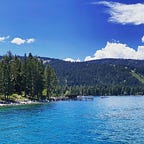The great battle of Navasri — 738CE — the battle which changed the course of Indian history.
Era of a change:
7th century CE was an era of rapid changes. A new unstoppable military force arose from the deserts of Arabia defeating every single opponent who stood against them.
The Persian superpower Sassanids were forever humbled within just a few years making it look so easy. Byzantine empire was defeated in the famous battle of Yarmouk where a severely outnumbered Arab army clinched victory. With this they went on to conquer all of north Africa in rapid succession and set their eyes on Spain in their West and India to their East.
Nothing seemed to stop them. Their invasion of spain proved to be a terrific success and they pressed forward only to be halted after their defeat in the battle of tours against the french army in 732 CE.
In the east however they had bigger plans.
Arab invasion of India
The Umayyad Arab armies reached the Banks of Indus by 712 CE. The King of Sindh ‘Raja Dahir’ is defeated and Sindh annexed to the
Arab Caliphate.
With the Fall of Sindh the door to the heart of India was now open. A massive Invasion was in the cards which materialised in 737 CE. Huge force was then assembled to capture and annex core Indian
territories.
All that lay in front of the Mighty Caliphate were the small Kingdoms of Gujarat and Rajasthan and the Chalukyan Empire.
The only powerful Kingdom they probably would have to face were the Badami Chalukyas ruled by the Powerful Emperor Vikramaditya II.
This was no normal opponent, Badami Chalukyas were the same Indian Empire which defeated the Arab Naval Invasion in 636CE being the first to defeat the Arab Caliphate.
Arab advance begin at around 737 CE.
Arabs had advanced up to Navsari after plundering the kingdoms of the Saindhavas, Kachchhelas, Saurashtra, Chavotkas, Mauryas, the Gurjaras, and others neighboring Kingdoms. None of them succeed in stopping the Arab onslaught. All of them were soundly defeated and their territories sacked. One by one forts fall like flies. The only major empire which could face this invasion head on was the Chalukyas.
Unopposed they reached the banks of the river Narmada in the Kingdom of the Chalukyas. The path to South India was now open for the taking. News reach King Vikramaditya II about Arab victory. Chalukyas previously had diplomatic relations with the Sassanids as shown in this 1400-year-old picture.
They (Chalukyas) were aware of the new power which they considered Unstoppable, which is what was mentioned in their inscriptions.
Sensing the imminent threat that was coming Vikramaditya went on to muster a massive force under the command of his best general
Avanijanashraya Pulakeshin and Dantidurga.
Wasting no time the Chalukyan army went to the meet the Arabs in a pitched battle. Both sides eventually meet at Navasari 738 CE to who will be the master of Hindustan.
A pitched battle ensues with both sides attacking each other head on.
Extremely huge casualties were reported on both sides. Eventually the
Chalukyan commander Avanijanashraya Pulakeshin with his successful planning and tremendous bravery manages to put the Arab
armies on their backfoot.
What happened later was the complete rout of the invading Arabs and the subsequent massacre of the invaders.
The Victory was so resounding that the Chalukyan forces went on to annex the former Gurjara territory to the Chalukya kingdom after repulsing the Arabs and chasing them back to their base in Sindh.
The reinforcement, which was supposed to come, was diminished along the way while trying to suppress local rebellion. Even this force was absorbed in its passage through Iraq for quelling a local rebellion. The defeat at the hands of Chalukyas is believed to have been a blow to the Arab forces with large costs in men and arms.
The mighty caliphate which extended from Spain in the west to Indus in the east had lost before Chalukyas.
The Arab Campaign turned out to be a disaster.
This Victory was greatly Celebrated and the Chalukyan Emperor was so overjoyed by such a success that he conferred the victorious Commander Avanijanashraya several titles upon him, including “solid pillar of Dakshinapatha” (Dakshinapathasadhara), “ornament of the Chalukya family” (Challuki-kulalankara), “beloved the earth” (Prithvi-vallabha), and most importantly. “the repeller of the unrepellable” (Anivartaka-
nivartayitri).
This defeat considerably weakened the arabs in the indian border and never could they gain foothold in the mainland india. This long battle between the Indian kingdoms and Arabs rage for 3 centuries which would end in a decisive victory for the Indian kingdoms and a permanent halt to the Arab expansion.
Thus a glorious chapter in the indian history had been written and India was saved.
Foot-notes:
https://en.m.wikipedia.org/wiki/Umayyad_Caliphate
https://en.m.wikipedia.org/wiki/Chalukya_dynasty
https://en.m.wikipedia.org/wiki/Vikramaditya_II
https://en.m.wikipedia.org/wiki/Umayyad_campaigns_in_India
